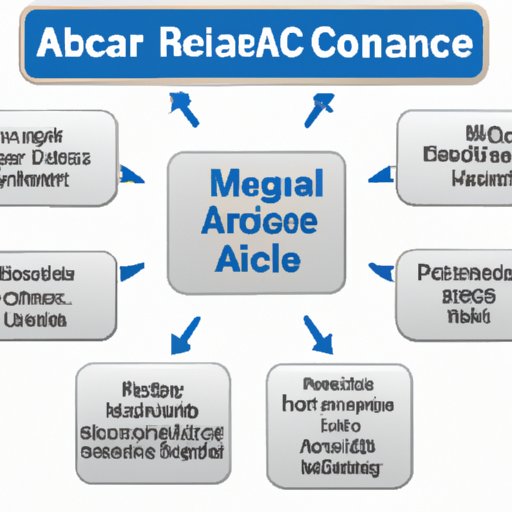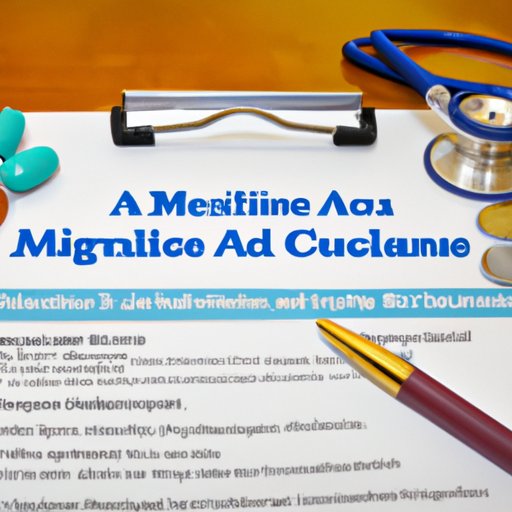Introduction
Medical ACA insurance is a form of health insurance that was created under the Affordable Care Act. It is designed to provide comprehensive coverage for individuals who need medical and prescription drug care. This type of insurance is available on both the private market and through government-sponsored exchanges, such as HealthCare.gov. In this article, we will explore the benefits, costs, and coverage of Medical ACA insurance.

Benefits of Medical ACA Insurance
Medical ACA insurance offers many benefits, including improved access to care, improved quality of care, and lower out-of-pocket costs. These benefits are especially important for those who have pre-existing conditions or who are otherwise unable to obtain traditional health insurance.
Improved Access to Care
One of the primary benefits of Medical ACA insurance is improved access to care. The insurance provides coverage for doctor’s visits, hospital stays, and other types of medical services. This allows individuals to receive the care they need without having to worry about the cost. Additionally, the insurance covers preventive care services, such as vaccinations and regular check-ups, which can help individuals stay healthy and avoid costly medical bills.
Improved Quality of Care
Medical ACA insurance also helps to improve the quality of care that individuals receive. The insurance requires plans to cover certain essential health benefits, such as mental health services, maternity care, and emergency services. This ensures that individuals are able to receive the care they need when they need it. Additionally, the insurance encourages providers to offer high-quality care by offering incentives for providers who meet certain quality standards.
Lower Out-of-Pocket Costs
Medical ACA insurance also helps to reduce out-of-pocket costs for individuals. The insurance limits the amount of money an individual has to pay in deductibles, copayments, and coinsurance. This helps to make medical care more affordable and accessible. Additionally, the insurance provides subsidies to individuals who meet certain income requirements, which can further reduce the cost of health care.

Comparing Different Medical ACA Insurance Plans
When selecting a Medical ACA insurance plan, it is important to compare different plans to find one that meets your needs. There are several factors to consider when comparing plans, including the plan options, coverage levels, and premiums.
Understanding Plan Options
Medical ACA insurance plans come in several different types. The most common type is the Preferred Provider Organization (PPO) plan, which allows individuals to choose from a network of approved providers. Other plan types include Health Maintenance Organizations (HMOs), Point-of-Service (POS) plans, and High-Deductible Health Plans (HDHPs). Each type of plan has its own advantages and disadvantages, so it is important to understand the differences before making a selection.
Examining Coverage Levels
It is also important to examine the coverage levels of each plan. Most plans have varying levels of coverage, such as basic, enhanced, and premium. It is important to select a plan that covers the services you need at a price you can afford.
Analyzing Premiums
The premium is the monthly fee that must be paid in order to maintain coverage. It is important to compare the premiums of different plans to ensure that you are getting the best value for your money. Additionally, many plans offer discounts for those who purchase their plans through the government-sponsored exchange.
Analyzing the Cost of Medical ACA Insurance
In addition to the monthly premium, there are other costs associated with Medical ACA insurance. These costs include deductibles, copayments, coinsurance, and maximum out-of-pocket costs.
Understanding Deductibles
A deductible is the amount of money an individual must pay before the insurance company begins to cover the cost of services. Most plans have a set deductible amount that must be met before services are covered. However, some plans may offer lower deductibles for certain services.
Exploring Copayments and Coinsurance
Copayments and coinsurance are additional costs that must be paid when receiving services. A copayment is a fixed fee that must be paid for each service received. Coinsurance is a percentage of the total cost of the service that must be paid by the individual. Both copayments and coinsurance vary depending on the plan.
Investigating Maximum Out-of-Pocket Costs
Maximum out-of-pocket costs are the maximum amount of money an individual must pay in a given year for services covered by the insurance. This amount varies depending on the plan, but it is typically limited to a certain percentage of an individual’s annual income.
Examining the Coverage of Medical ACA Insurance
Medical ACA insurance plans are required to cover certain essential health benefits. Additionally, they must provide coverage for preventive care services, prescription drugs, and mental health services. It is important to review the coverage of each plan to ensure that it meets your needs.
Exploring Essential Health Benefits
Medical ACA insurance plans are required to cover 10 essential health benefits, including ambulatory patient services, emergency services, hospitalization, maternity and newborn care, mental health and substance abuse services, prescription drugs, rehabilitative and habilitative services, laboratory services, preventive and wellness services, and pediatric services.
Examining Preventive Care Coverage
Most plans provide coverage for preventive care services, such as vaccinations and regular check-ups. This coverage can help individuals stay healthy and avoid costly medical bills.
Investigating Prescription Drug Coverage
Prescription drug coverage is also included in most plans. This coverage can help to reduce the cost of prescription medications, which can be expensive. Additionally, some plans may offer additional discounts for generic medications.

Outlining the Eligibility Requirements for Medical ACA Insurance
In order to be eligible for Medical ACA insurance, individuals must meet certain requirements. These requirements include understanding subsidies, open enrollment periods, and special enrollment periods.
Understanding Subsidies
Subsidies are financial assistance provided by the government to help individuals pay for their insurance. Individuals who meet certain income requirements may qualify for subsidies. Additionally, some plans may offer additional discounts for those who purchase their plans through the government-sponsored exchange.
Examining Open Enrollment Periods
Open enrollment periods are specific times of the year during which individuals can apply for or change their health insurance coverage. During these periods, individuals can shop around for the best plan to meet their needs.
Investigating Special Enrollment Periods
Special enrollment periods are available to individuals who experience changes in their life, such as a job loss or marriage. During these periods, individuals can apply for or change their health insurance coverage without penalty.

Investigating the Success Rates of Medical ACA Insurance
It is important to evaluate the success rates of Medical ACA insurance to determine if it is providing the desired results. This can be done by examining claims denials, satisfaction ratings, and consumer reviews.
Examining Claims Denials
Claims denials refer to the number of claims that are denied by the insurance company. It is important to evaluate the claims denial rate to ensure that individuals are receiving the care they need in a timely manner.
Evaluating Satisfaction Ratings
Satisfaction ratings refer to how satisfied individuals are with their insurance coverage. Surveys and customer reviews can provide valuable insight into the quality of the insurance coverage.
Assessing Consumer Reviews
Consumer reviews can also provide valuable information about the success rates of Medical ACA insurance. Reviews can provide insight into the experiences of other individuals who have used the insurance and can help individuals make informed decisions about their own coverage.
Evaluating the Impact of Medical ACA Insurance on Health Care Costs
Finally, it is important to evaluate the impact of Medical ACA insurance on health care costs. This can be done by investigating average cost savings, examining cost reduction strategies, and analyzing cost increase trends.
Investigating Average Cost Savings
Average cost savings refer to the amount of money saved by individuals who have Medical ACA insurance. This can be done by comparing the cost of care between those with and without insurance. This can help to illustrate the impact of the insurance on health care costs.
Examining Cost Reduction Strategies
Cost reduction strategies refer to the measures taken by insurance companies to reduce the cost of care. This can include negotiating lower prices with providers, increasing the use of generic medications, and offering incentives for preventive care.
Analyzing Cost Increase Trends
Cost increase trends refer to the changes in the cost of care over time. This can help to identify potential areas of concern and allow insurance companies to adjust their plans accordingly.
Conclusion
Medical ACA insurance provides individuals with improved access to care, improved quality of care, and lower out-of-pocket costs. When selecting a plan, it is important to compare different plans to find one that meets your needs. Additionally, it is important to understand the costs associated with the insurance, such as deductibles, copayments, and coinsurance. Finally, it is important to evaluate the success rates of the insurance, as well as the impact it has on health care costs. Overall, Medical ACA insurance can be a beneficial and cost-effective way to obtain health care.
(Note: Is this article not meeting your expectations? Do you have knowledge or insights to share? Unlock new opportunities and expand your reach by joining our authors team. Click Registration to join us and share your expertise with our readers.)
